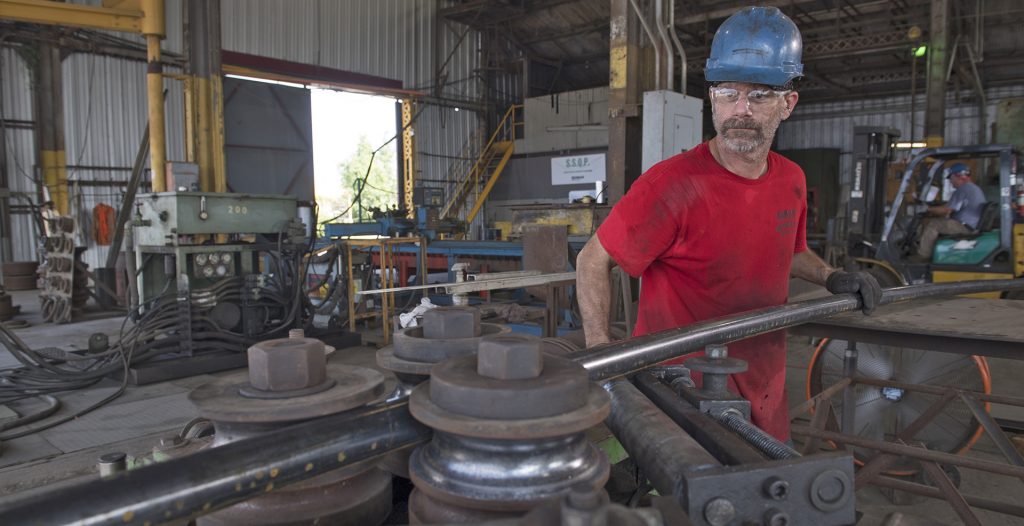Scrap metal and metal recycling in Jacksonville, FL go hand-in-hand thanks to Berman Bros. and Rubin Iron Works. Scrap metal buyers, like Berman Bros., offer competitive pricing on aluminum scrap, copper scrap, and other scrap metals. Each year, Berman Bros. processes over 100 million pounds of scrap metal. Those metals or alloys are processed, melted down, and then re-formed into blocks, sheets, pipes and beams. Most of the metals processed by Berman Bros. go directly to the Jacksonville metal fabrication facility, Rubin Iron Works. Berman Bros. partnered with Rubin Iron Works in 2005 to create a single-source company offering the full spectrum of metal services throughout the metal fabrication process. Let’s take a look at the seven main types of metal fabrication offered by Rubin Iron Works.

- Welding – Welding is the process of joining two or more pieces of metal through the use of high heat and pressure. They can be joined with or without the use of filler material, fusing the two pieces together at the seam or joint. The most common types are metal inert gas (MIG), tungsten inert gas (TIG), and plasma arc welding.
- Braking – Braking involves the bending of sheet metal. Different types of brake machines can create everything from a simple crease, to an entire box shape. In braking, the sheet is clamped flat, while a swing style plate is lifted across the overhanging section, bending that portion to the angle of the edge of the clamping bar.
- Forming – Forming is, quite directly, the reshaping of a flat piece of metal into a new form. No material is added or taken away, and the reshaping is usually accomplished through pressure. The material is bent, stretched or compressed to such an extent that it does not return to its previous state.
- Punching – Punching, also referred to as piercing, uses a punch, or turret, to force a hole into a piece of metal. The hole is sheared away from the main piece and discarded in one motion. Holes can be punched is specific locations through die cuts for either utilitarian or decorative purposes.
- Rolling – Rolling is a metalworking process that pulls a thick piece of metal through heavy roll formers that flatten the metal to a desired thickness as it passes. The rolls themselves provide the appropriate friction to pull the metal and contour to provide the proper shape. The action is similar to that of rolling out bread dough.
- Cutting – Cutting is the separating, or dividing, of one piece of metal from another. In metalworking, cutting is accomplished using lasers, waterjets or flame to achieve the desired shape. It can be done by hand or with more precise technologies to create very exact results. It is often the first step in multi-process metalworking.
- Shearing – Shearing is the cutting action wherein a blade(s) slices through sheet metal in a straight line, similarly to using scissors to cut paper. Machines called squaring shears help align the precise location of the cut while the blades stretch, or deform, a razor-thin piece of the metal to the point that it appears to fracture along the cut line.


